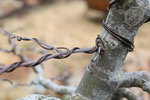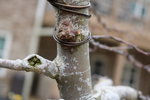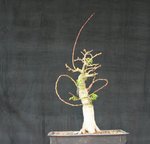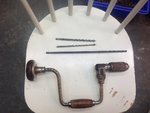Lars Grimm
Chumono
Hi All,
I commonly see folks talk about developing a good trunk and then grafting on all the branches in good locations, but not which grafting approach to use in these circumstances. I am making plans for this coming spring and am debating the pros/cons of thread grafting versus approach grafting new primary branches in appropriate position.
I have a Japanese Maple with a trunk up to 3" thick and very few good primary branches. Approach grafts would be easy, but I doubt I could get the angle to be as close to horizontal as I want in some locations. Thread grafts could easily get the correct angle, but I would be threading them through several inches of primary trunk in several places.
Is there a limit to how long a thread graft can traverse the trunk before exiting?
Any reason to favor thread vs approach grafting for primary branches on larger sized Japanese Maples?
Thank you all as always for the feedback.
Lars
I commonly see folks talk about developing a good trunk and then grafting on all the branches in good locations, but not which grafting approach to use in these circumstances. I am making plans for this coming spring and am debating the pros/cons of thread grafting versus approach grafting new primary branches in appropriate position.
I have a Japanese Maple with a trunk up to 3" thick and very few good primary branches. Approach grafts would be easy, but I doubt I could get the angle to be as close to horizontal as I want in some locations. Thread grafts could easily get the correct angle, but I would be threading them through several inches of primary trunk in several places.
Is there a limit to how long a thread graft can traverse the trunk before exiting?
Any reason to favor thread vs approach grafting for primary branches on larger sized Japanese Maples?
Thank you all as always for the feedback.
Lars




